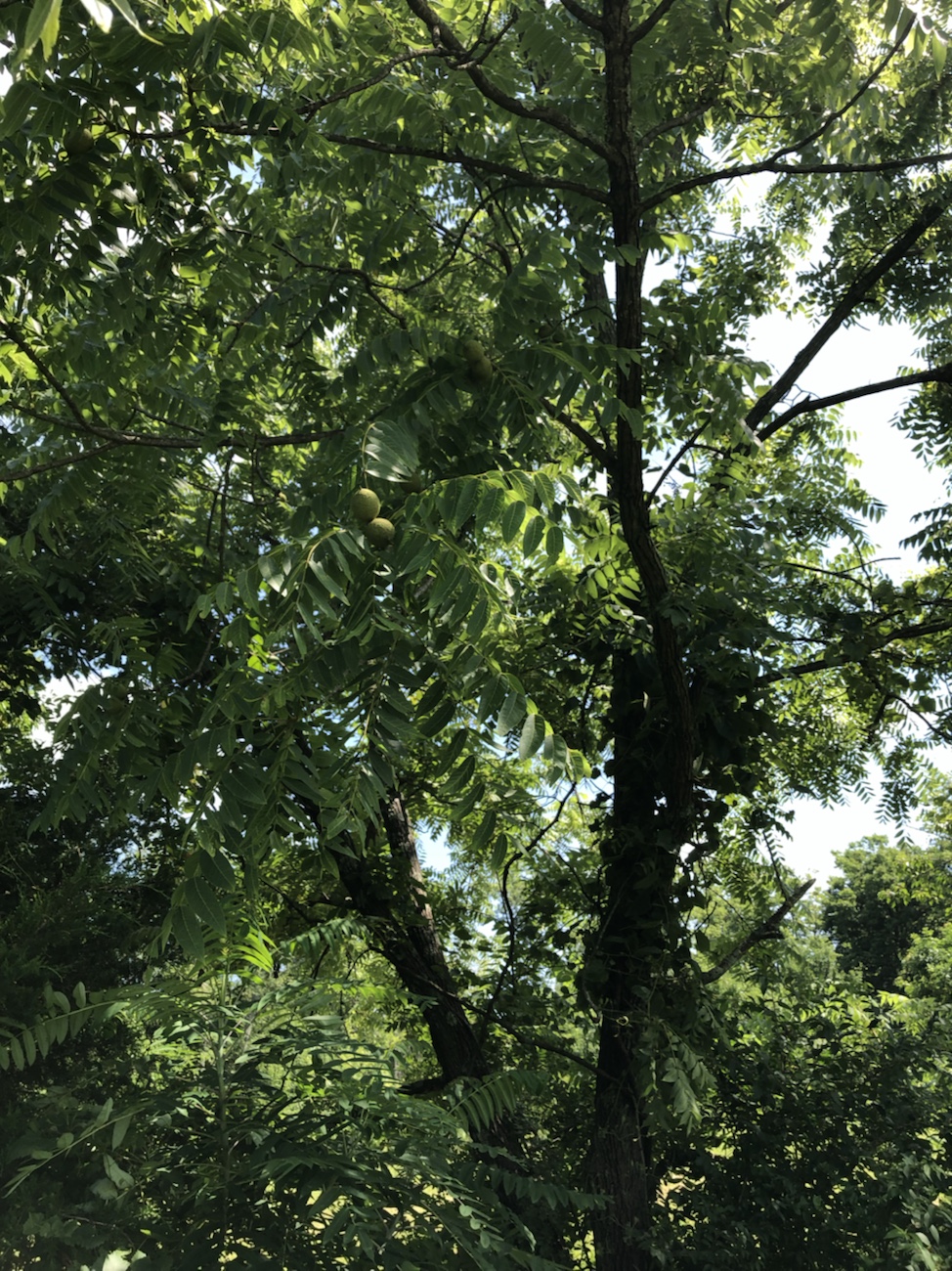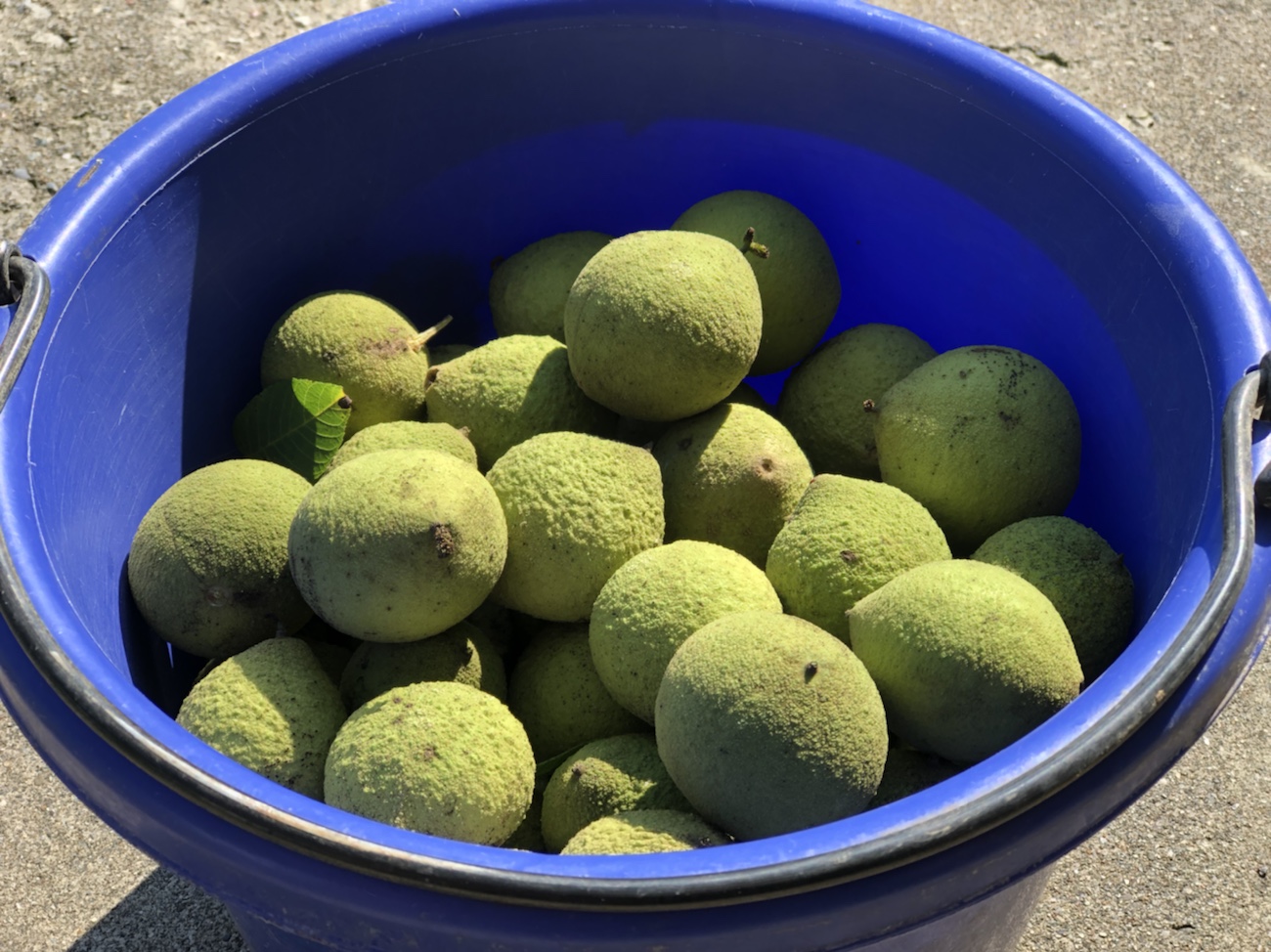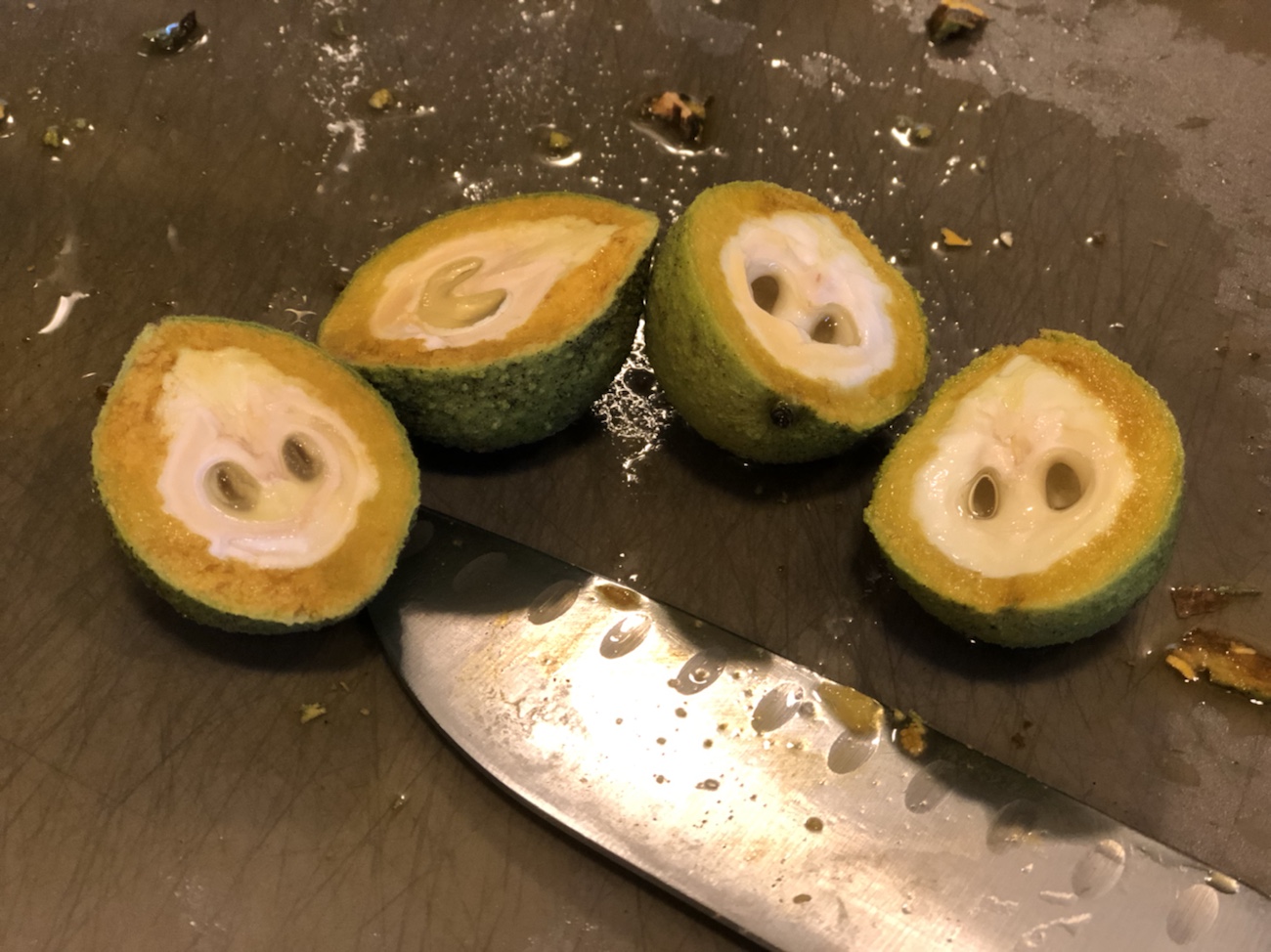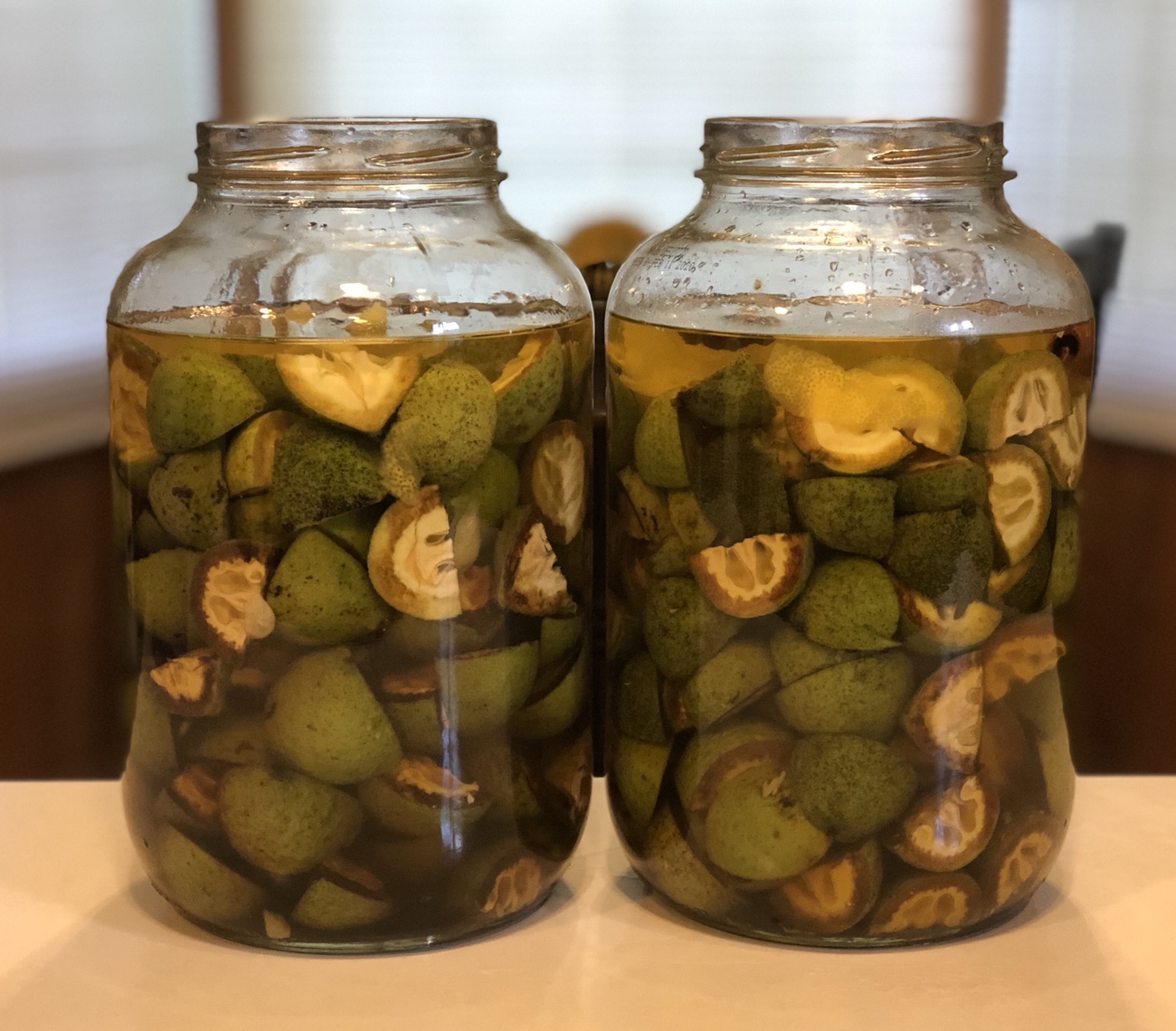
The telltale small green globes have appeared on the walnut trees, accompanied by that unique, almost citrusy, fragrance: black walnuts are here! I’ve previously made an anthelmintic tincture from the green walnuts, but decided to try my hand at something a little different this year.
I’m making Nocino, a black walnut liqueur. The process involves cutting up green walnuts and letting them infuse in vodka (along with lemon zest and spices, if desired) for a few months. Sugar or simple syrup is added to the Nocino to sweeten it.

While I haven’t tasted the liqueur before, it’s described as “nutty” (go figure) and can apparently be quite sweet in some versions. I plan to add the sweetener after the infusion has had plenty of time to steep, and to be conservative in the amount of sugar added.
It was easy enough to collect the walnuts in the morning, and a good exercise to locate the trees and make mental note of their accessibility – some had walnuts that were simply too high to reach, out of bounds even for the metal pole I used to knock a few down. In addition, it’s difficult to tell how young the walnuts actually are until you cut into them; it turned out that size and color weren’t terribly accurate indicators.

While quartering, I discovered that some of the walnuts were more developed than is ideal. I had to whack those pretty hard, even though they were immature inside (at least one recipe indicated that I should throw those out because they were “too old”…nope). The undeveloped walnuts look rather strange, like pale organs inside the outline of where the shell will harden. Perhaps next year, I’ll harvest in late June (June 24th is apparently the traditional harvesting date, on the Feast of San Giovanni).
I used 37 walnuts per gallon jar – that’s how many I ended up with in my pail – and added the zest of a lemon to each, along with a cinnamon stick. I also added whole cloves to one; the other received a generous number of star anise (love!). In addition, it took seven cups of “economy” vodka to cover the nuts in each jar.

The brew will transform into a dark brown liqueur over a period of two to three months. This very special liqueur should be ready to warm the cockles as Autumn arrives!

Comments are closed.